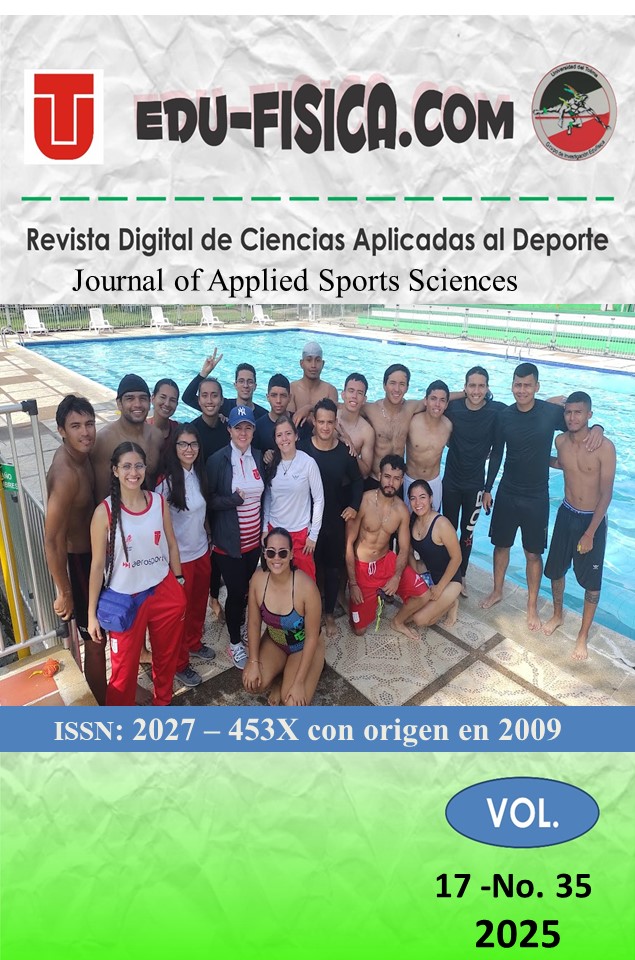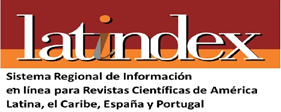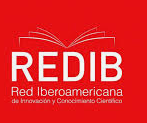ROMÊNIA: FORMAÇÃO DA NAÇÃO E PERÍODO SOVIÉTICO
DOI:
https://doi.org/10.59514/2027-453X.3558Palabras clave:
Rumania, Deporte, Entrenamiento deportivo, Rendimiento deportivoResumen
El objetivo de la revisión fue explicar cómo se formó Rumanía, cómo la dictadura y el deporte siguieron los modelos soviéticos de 1946 a 1989. La introducción explicó cómo la Rumanía utilizó el régimen político y el sistema deportivo de la Unión Soviética. La parte 1 informó cómo se formó Rumania y en la parte 2 presentó cómo funcionó esta nación con el régimen político soviético. La parte 3 explicó cómo se utilizó el sistema deportivo soviético en Rumanía. En conclusión, el deporte en la Rumania soviética se practicaba de manera similar al de la URSS, eso fue esa fue la razón del éxito competitivo de esa nación.
Descargas
Citas
Adam, R. (2020). Football and authoritarianism in twentieth century Romania: between propaganda and subversion. Soccer and Society, 21(6), 657-666.
Arroyo, A. (2023). El legado romano como símbolo diferenciador en Rumanía. (Grado en Humanidades). Universidad de Alcalá.
Ayres, T. (2023). Saiba mais! Com a Turma da Mônica. (Monografia). Licenciatura em Ciências Biológicas, UFRGS.
Baghiu, S. (2019). The french novel in translation: a distant reading for Romania during communism (1944-1989). Transylvanian Review, 28(1), 83-98.
Bara, A., Heuvel, W., e Maarse, T. (2002). Reforms of haelth care system in Romania. Croatia Medical Journal, 43(-), 446-452.
Bârsu, D. (2016). A Romanian book, unjustly forgotten, regarding physical education for children. Palestrica of the Third Millennium, 17(4), 296-299.
Bassetto, B. (2008). O romeno no contexto românico. Organon, -(44/45), 39-52.
Bernabé, L., e Eugenio, M. (2019). Nobleza y heráldica de Rumanía. Revista de la Real Asociacion Hidalgos de España, -(557), 2-35.
Bianca, C., e Aurel, I. (2018). Contributions to the development of recreational gymnastics in Romania. Science, 18(2), 277-283.
Boersner, D. (1990). Rumania: de la frustración a la esperanza. Nueva Sociedad, -(108), 111-121.
Bompa, T. (2002). Periodização: teoria e metodologia do treinamento. São Paulo: Phorte.
Cervin, G., Nicolas, C., Dufraisse, S., Bohuon, A., e Quin, G. (2017). Gymnastics centre of gravity the Fédération Internationale de Gymnastique, its governance and the cold war, 1956-1976. Sport in History, -(-), 1-24.
Chelcea, L. (2003). Ancestors, domenstic groups, and the socialist state: housing nationalization and restitution in Romania. Comparative Studies in Society and History, 45(4), 714-740.
Chelcea, L. (2012). The housing quastion and the state-socialist answer: city, class and state remaking in 1950s Bucharest. International Journal of Urban and Regional Research, 36(2), 281-296.
Chin, J. (2008). Global capitalism meets local post-communism. (Doctor of Philosophy). University of Maryland.
Chirazi, M. (2019). Practicing sports in Romania at the school level. 4th International Scientific Conferences SEC-IASR. Galati, Romania. 2019.
COI (2023). Medalhas da Romênia. Disponível em: https://www.olympic.org/romania
Constantin, P. (2015). Heroes, conflicts and reconciliations in Romanian-Hungarian sport confrontations. RJHIS, 2(1), 69-87.
Constantin, P., e Maier, V. (2014). Invatamantul superior de educatie fizica si sport in România (1948-1989). Danubius, 32(-), 345-368.
Constantin, P., e Maier, V. (2015). Sport and physical education in communist factories: from the Soviet Union to Romania. RJHIS, 2(2), 217-232.
Coelho, H. (2010). Portela: um modelo na difusão da periferia. (Mestrado em arquitetura). ISCTE-IUL.
Cristescu, C. (2012). The political function of studying literature in the communist Romania. Bulletin of the Transilvania University of Brasov, 5(54), 27-32.
Dobre, C. (2018). Women`s everyday life in communist Romania: case studies. Journal Diacromia, -(-), 35-51.
Dorobat, C. (2019). O último natal da Romênia comunista. Mises Brasil. Disponível em: https://mises.org.br/Article.aspx?id=2267&ac=161487
Faje, F. (2015). Playing for and against the nation: football in interwar Romania. Nationalities Papers, 43(1), 160-177.
Felisberto, J. (2023). Construção de um grande centro comercial na Roménia. (Mestrado em Engenharia Civil). Universidade do Porto.
Fugueras, R. (2018). Arquivo, justiça, reparação e direitos humanos. Em. A. Marques, I. Stampa, e S. Troitiño (Org.). Trabalhadores, arquivos, memória, verdade, justiça e reparação (p. 23-40). São Paulo: CUT.
Gavrilidis, A., Gradinaru, S., Ioja, I., Carstea, E., e Stupariu, I. (2015). Land and cover dynamics in the periurbanarea of an industrialized east-european city an overview of the last 100 years. Carpathian Journal of Earth and Environmental Sciences, 10(4), 29-38.
Goeijenbier, J. (2020). Romanian sports diplomacy at the Olympics in the 1980s. (Master of Arts). Utrecht University.
Gray, K. (1989). The soviet food complex in a time of change. Agricultural Trade Reform, -(-), 19-25.
Grosescu, R. (2017). Judging communist crimes in Romania: transnational and global influences. International Journal of Transitional Justice, -(-), 1-20.
Hefner, F., e Woodward, D. (1999). A better red: the transition from communism to Coca-Cola in Romania. Quarterly Journal of Austrian Economics, 2(2), 43-49.
Ilie, E. (2020). O habitar coletivo como determinante social. (Mestrado em Arquitetura). Universidade de Lisboa.
Ionel, M., Dragos, C., e Cristian, P. (2021). History of the national football team of Romania. Science, Movement and Health, 21(1), 36-44.
Keil, T., e Andreescu, V. (1999). Fertility policy in Ceausescu`s Romania. Journal of Family History, 24(4), 478-492.
Light, D., Nicolae, I., e Suditu, B. (2002). Toponymy and the communist city: street names in Bucharest, 1948-1965. GeoJournal, 56(-), 135-144.
Lippe, G. (2002). Media image: sport, gender and national identities in five European countries. International Review for the Sociology, -(3-4), 369-394.
Lup, A., Miron, L., e Alim, I. (2018). Reforms and agricultural policies in Romania (1918-2018). Scientific Papers Series Management, Economic Engineering in Agriculture and Rural Development, 18(2), 289-300.
Marin, V., e Chelcea, L. (2018). The many (still) functional housing estates of Bucharest, Romania: a viable housing provider in Europe`s densest capital city. In. D. Hess, T. Tammaru, and M. Ham (Eds.). Housing estates in Europe. New York: Springer.
Marques Junior, N. (2019). Benefícios da revolução russa. Germinal, 11(1), 210-211.
Marques Junior, N. (2020). Periodização de longo estado de forma. Revista Peruana de Ciencia de la Actividad Física y del Deporte, 7(2), 931-940.
Marques Junior, N. (2021). O esporte na antiga Iugoslávia – parte 1. Revista Edu-física.com: Ciencias Aplicadas al Deporte, 13(27), 80-100.
Marques Junior, N. (2022a). Esporte da Polônia da “cortina de ferro”. Cuerpo, Cultura y Movimiento, 12(1), 1-26.
Marques Junior, N. (2022b). Escola socialista do treinamento esportivo: a preparação do atleta. Revista Actividad Física y Ciencias, 14(1), 55-75.
Marques Junior, N. (2022c). O esporte na antiga União Soviética – parte 2. Revista Edu-fisica.com: Ciencias Aplicadas al Deporte, 14(29), 80-101.
Marques Junior, N. (2022d). Periodização da antiguidade: contribuição de Claudius Aelius Galenus. Revista Edu-fisica.com: Ciencias Aplicadas al Deporte, 14(29), 21-37.
Marques Junior, N. (2023). O esporte na antiga Iugoslávia – parte 2. Revista Olimpia, 20(4), 75-96.
Marques Junior, N. (2024). O impacto da revolução de 1959 no esporte de Cuba – parte 2. Revista Edu-fisica.com: Ciencias Aplicadas al Deporte, 16(33), 1-10.
Massiera, B., e Ionescu, S. (2008). Les effets de l`héritage communiste de la période 1946-1989 sur l`actualité du sport de loisir en Roumanie. HAL, -(-), 1-12.
Mathe, D., e Carjan, R. (2016). Architecture for the new man in the 1950`s in Romania. First glimpse of communism build environment. Procedia Engineering, 161(-), 1520-1526.
Mehedinti, T. (2007). Traducciones rumanas de la obra de cervantes. In. G. Lupchian, M. Mihalciuc, e I. Waniek, I. (Eds.). Anabele Universitatii Crestine Dimitrie Centemir (p. 146-152). Bucuresti: Pro Universitari.
Melania, C., e Valentin, L. (2023). The perception of Romanian athletes in society during the communist period. Gymnasium, 24(1), 39-49.
Melo, T. (2018). De Berlim a Bucareste: os 35 anos que abalaram os Bálcãs. Hoplos, 1(2), 96-109.
Mihai, M. (2010). Julgamentos penais em períodos de transição e o desafio das emoções: história de dois países. Revista Crítica de Ciências Sociais, 88(-), 155-184.
Miranda, M. (2015). Conferência de Potsdam. Em. F. Silva, S. Medeiros, e A. Vianna (Org.). Enciclopédia de guerras e revoluções (p. 47-49). Vol. 2. Rio de Janeiro: Elsevier.
Moisa, G. (2012). Electoral practices and behaviour in western Romania during the elections of November 19th, 1946. Revista Romana de Geografie Palitica, 14(1), 51-60.
Möller, R. (2008). História do esporte e das atividades físicas. São Paulo: Ibrasa.
Nicolae, M., Muresan, M., e Marinescu, R. (2010). The long-term effects of the socialist industrialization of Romania. Metalurgia International, 15(6), 118-126.
Oprica, V. (2008). Gender equality and conflicting attitudes toward women in post-communist Romania. Human Rights Review, 9(-), 29-40.
O`Mahony, M. (2006). Sport in the USSR. London: Reaktions Books.
Paiva, V. (2013). Amo/sou cores: um estudo psicolinguístico sobre as cores como forma de representação nacional. (Bacharelado em Letras). UNB, Instituto de Letras.
Panait, M. (2016). Remembering 10 of the most iconic cars built behind the iron curtain. Autoevolution. Disponível em: https://www.autoevolution.com/news/remembering-10-of-the-most-iconic-cars-built-behind-the-iron-curtain-105544.html
Petcu, A. (2020) On the patrimony of the Romania orthodox church during the communist regime. Acta University. Sapientiae, Legal Studies, 9(1), 167-178.
Phillips, J. (2010). The educational system in Romania. (Thesis). Liberty University.
Poenaru, F. (2015). Power at play: soccer stadiums and popular culture in 1980s Romania. Socialist Escapes, -(-), 232-251.
Popa, B. (2019). Un sport englezesc invatat din Franta. Rugby-ul ca istorie a elitelor din România (1913-1940). Apropos, -(2), 72-82.
Popescu, C. (2004). A defined continuity: Romanian Socialist architecture. Blok, -(3), 13-33.
Popescu, A. (2013). Headteachers and the decentralisation of public education in post-communist Romania. (Doctor of Philosophy in Education). University of Manchester.
Puni, A. (2012). From performance sports to sports for all: Romania 1945-1965. Legal aspects. Mediterranean Journal of Social Sciences, 3(10), 183-190.
Rigó, M. (2017). The long first world war and survival of business elites in east-central europe: Transylvania`s industrial boom and the enrichment of economic elites. European Review of History, 24(2), 250-272.
Riordan, J. (2007). The impact of communism on sport. Historical Social Research, 32(1), 110-115.
Rotar, M., e Ursu, V. (2020). Romanian religious environments and the development of sports in Romania in the 1930. Sport in History, -(-), 1-26.
Rusu, O., e Cuza, A. (2016). Sport and politics – unilateral or joint interests? Romanian case. International Journal of Science Culture and Sport, 4(2), 507-514.
Sadlak, J. (1991). The use and abuses of the university: higher education in Romania, 1860-1990. Minerva, 29(2), 195-225.
Sageata, R., Mitrica, B., e Mocanu, I. (2021). Centralized industrialization in the memory of places. Case studies of Romanian cities. Societies, 11(132), 1-16.
Sala, P. (2005). El rumano, idioma románico. BAPL, -(39), 9-29.
Sériot, P. (2019). A língua Moldova nomeia o quê? Conexão Letras, 14(22), 37-67.
Sousa, B. (2013). A política e o desporto no período da guerra fria: o caso da República Democrática Alemã. (Mestrado). FCSH, Universidade Nova de Lisboa.
Szucko, A. (2017). Identidade europeia e integração regional. Conjuntura Internacional, 14(1), 54-67.
Teodorescu, B., e Hornoiu, C. (2022). Sport si politica în România comunista. Studii şi Articole de Istorie, -(34), 35-61.
Tubino, M. (1993). Metodologia científica do treinamento desportivo. 11ª ed. São Paulo: Ibrasa.
Viana, N. (2016). A revolução polonesa de 1980. Enfrentamento, 11(20), 74-96.
Vianna, A. (2015a). COMECON. Em. F. Silva, S. Medeiros, e A. Vianna (Orgs.). Enciclopédia de guerras e revoluções (p. 121). Vol. 3. Rio de Janeiro: Elsevier.
Vianna, A. (2015b). Romênia. Em. F. Silva, S. Medeiros, e A. Vianna (Orgs.). Enciclopédia de guerras e revoluções (p. 521-523). Vol. 3. Rio de Janeiro: Elsevier.
Wood, M. (2010). Superpower: Romanian women`s gymnastics during the cold war. (Doctor of Philosophy in History). University of Illinois.
Xenofontov, I. (2019). România în, época Nicolae Causescu (1965-1989). Revista Militara, 1(21), 104-133.
Descargas
Publicado
Cómo citar
Número
Sección
Licencia
Si el manuscrito es aceptado para publicación los derechos de reproducción serán de la Facultad de Ciencias de la Educación, Universidad del Tolima. Ninguna publicación, nacional o extranjera, podrá reproducir ni traducir los artículos ni sus resúmenes con fines comerciales, sin previa autorización escrita del Comité Editorial de la revista Edu-Física.










